This city in Idaho is why L.A. can’t legally clear its streets of homeless encampments
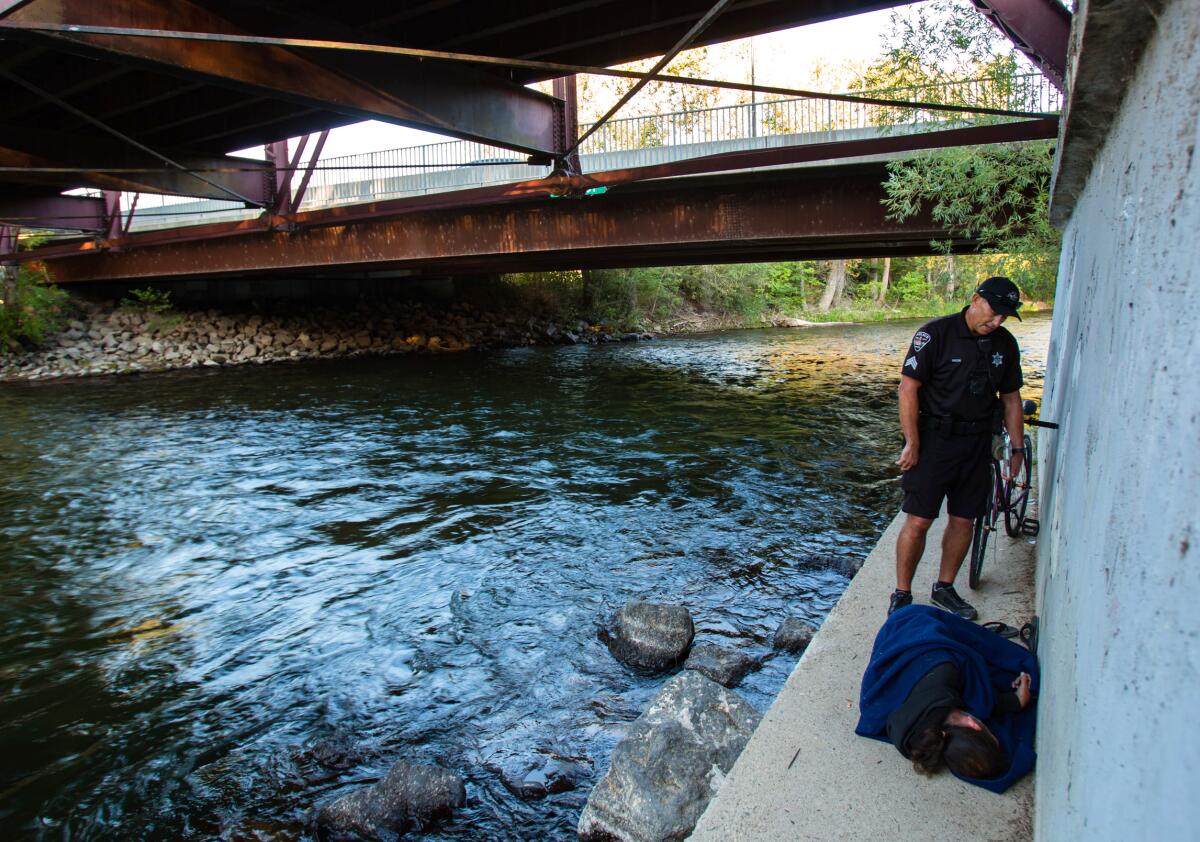
BOISE, Idaho — The homeless men and women who live in Idaho’s largest city are well-nigh invisible. You might see a line waiting for the main library doors to open. Or a solitary shape, wrapped in a blanket, sleeping at the base of a bridge along the Boise River. Or maybe a grizzled veteran holding a cardboard sign at a busy corner. But just one.
The difference between homelessness in Los Angeles and homelessness in Boise is stark — as in orders of magnitude stark. There is no skid row here, no Tenderloin like San Francisco’s, no American River Parkway as in Sacramento.
Yet, it is this midsize city with its relatively manageable homeless population that is setting the enforcement standards for its much bigger counterparts in the West.
Boise Mayor David Bieter is attempting to challenge a landmark federal court ruling that prohibits cities from ticketing or arresting homeless people for sleeping or camping on public property if there are no shelter beds available as an alternative. The city and county of Los Angeles, along with several local governments in California and elsewhere, have filed court documents supporting Bieter’s bid.
The mayor hopes the U.S. Supreme Court will take up and then overturn Martin vs. City of Boise. He contends the ruling by the U.S. 9th Circuit Court of Appeals has hamstrung more than 1,600 Western municipalities in their efforts to control homeless encampments in parks and on sidewalks. Los Angeles, which President Trump says is “destroying” itself with homelessness, is chief among them.
L.A. has more than 36,000 homeless people and an untold number of encampments, which pop up faster than city sanitation crews can dismantle them. A recent Times analysis found that a majority of homeless people have either reported or showed signs of mental illness, a physical disability or substance abuse — conditions that get worse the longer people remain outside.
Boise, by comparison, has anywhere from 1,000 to 2,000 homeless people, depending on whom you ask. There has been one encampment in recent memory. It was called Cooper Court, and the city tore it down in 2015.
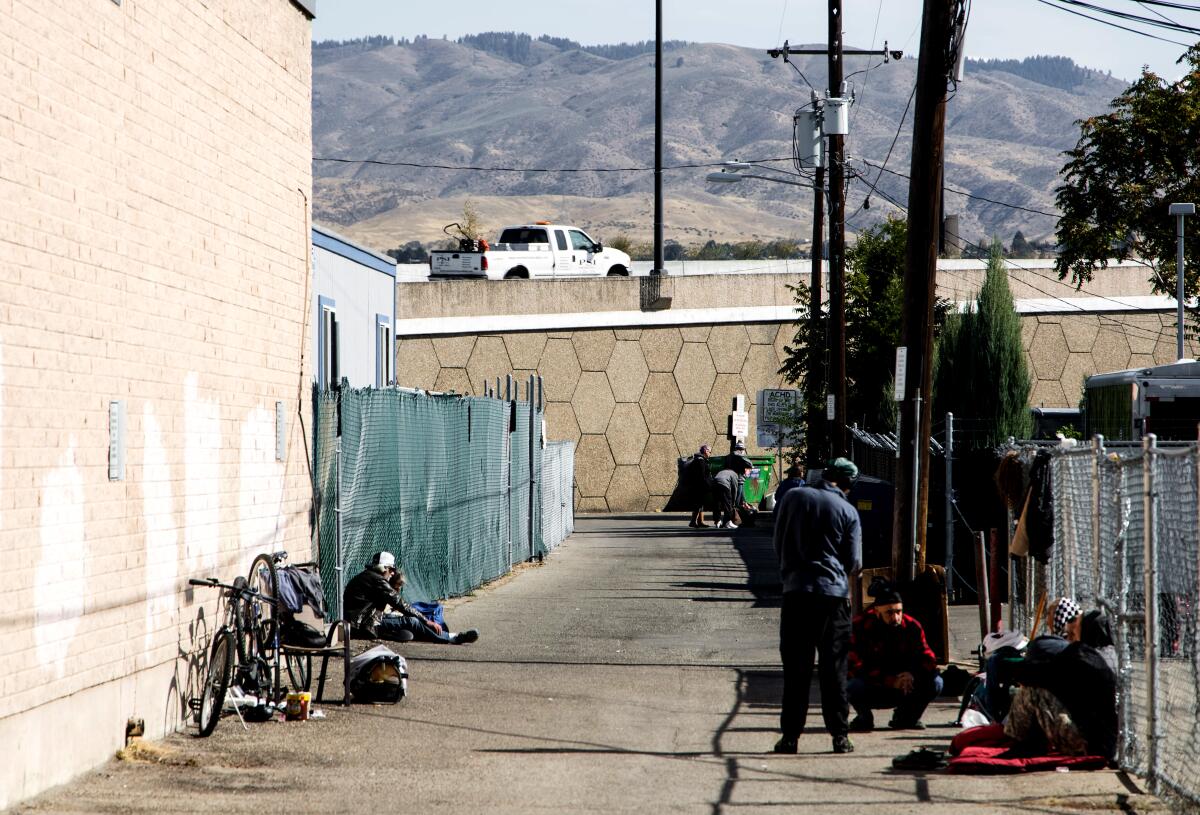
This is perhaps the key difference between homelessness in California’s biggest city and in the leafy capital of Idaho: optimism.
“We have a great chance of actually taking care of everyone,” said Jodi Peterson-Stigers, executive director of Interfaith Sanctuary, one of Boise’s three overnight shelters. “Los Angeles is completely out of control … whereas we really do have a manageable problem if we can work together in supporting the population as opposed to criminalizing the population.”
Bieter declined to comment on Martin vs. City of Boise or on homelessness in his fast-growing city of about 228,000 people. But in a written statement released when Boise filed its petition with the Supreme Court, he said, “Cities will not have the tools they need to prevent a humanitarian crisis on their own streets” if the ruling stands.
Pamela Hawkes, 36, is one of half a dozen or so people who sued the city in the Martin case, which was filed in 2009. She and her then-partner had driven to Boise from Spokane, Wash., in a friend’s RV, hoping for a fresh start.
“My ex-boyfriend mentioned that he had lived in Boise and how nice it was, and maybe we could get on our feet there,” Hawkes said. She was in her early 20s at the time. “But we got stuck in a cycle. There were times we’d get on our feet.”
She fell silent on the other end of the phone, the rest of the sentence left unsaid: There were times we would fall flat.
Boise is the heart of the burgeoning Treasure Valley, a swath of southwestern Idaho that’s among the fastest-growing regions in the country. It’s a college town (home of Boise State University) and the financial heart of the Gem State. The preliminary unemployment rate for August, the most recent figure available, is a scant 2.6% — more than a percentage point less than the national rate, according to the federal Bureau of Labor Statistics. “Now Hiring” signs dot the city. The sounds of construction echo.
But, as in Los Angeles, prosperity has had unintended consequences.
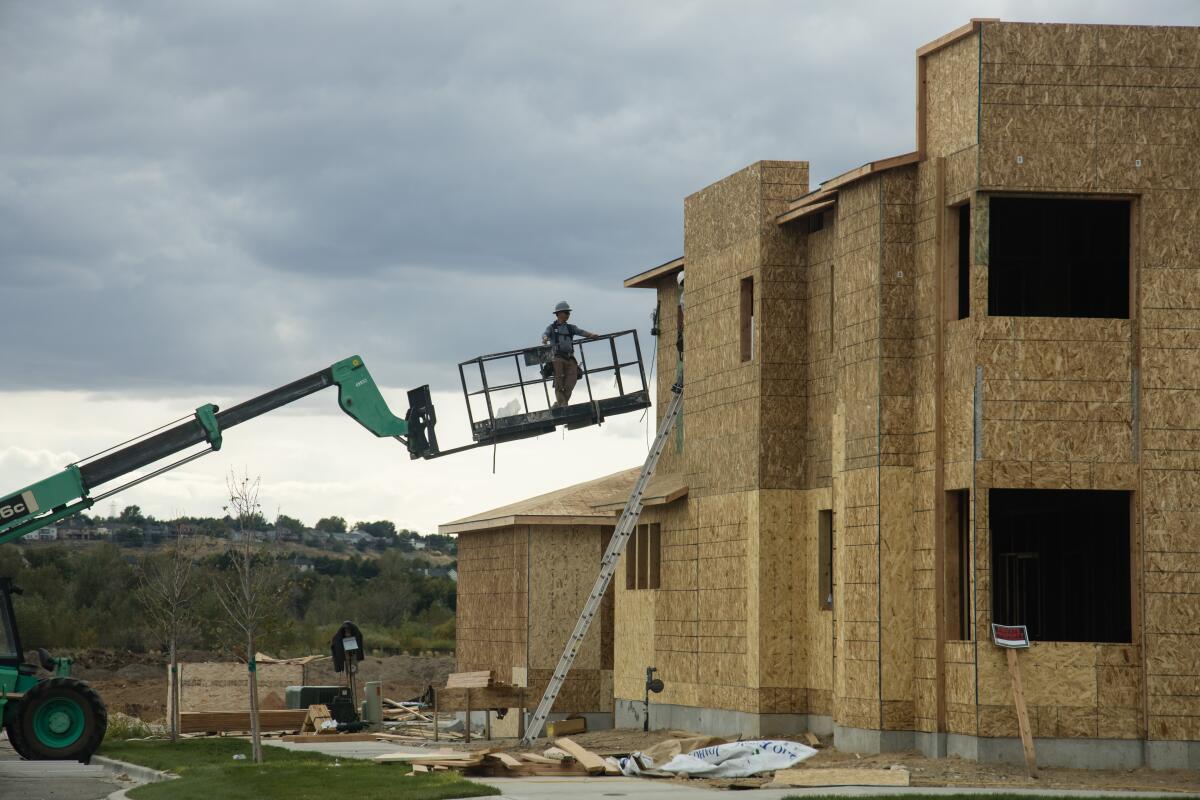
The city’s 2019 point-in-time count placed the number of homeless people at 713, down slightly from the previous year. But 836 homeless children attended Boise Unified School District in the 2018-19 school year, the most up-to-date statistics available, according to the state Department of Education. And the Idaho Housing and Finance Assn. pegs the number of homeless people in Ada County, where Boise is located, at 2,059.
Eight times in the last two years, the Idaho Statesman has published headlines like this one about the two main counties in the Treasure Valley: “Ada, Canyon home prices set records again in August as ‘perfect storm’ fuels sales.” Since February 2018, the median home price in Ada County has risen 19.3% to a high of $354,405, the Statesman wrote in September.
That sounds great, if you have a California salary. But just like California, wages here haven’t kept up with the price of housing. The minimum wage in Idaho is a bottom-of-the-nation-scraping $7.25 an hour, which makes even so-called affordable housing pretty unaffordable.
That is, if there is any — and that’s a big if.
Housing that Boise’s poorest residents can afford is all but nonexistent. And even at the lowest estimate, the number of homeless people outstrips emergency accommodations: 372 emergency beds, 146 overflow mats, 12 cribs spread over three shelters.
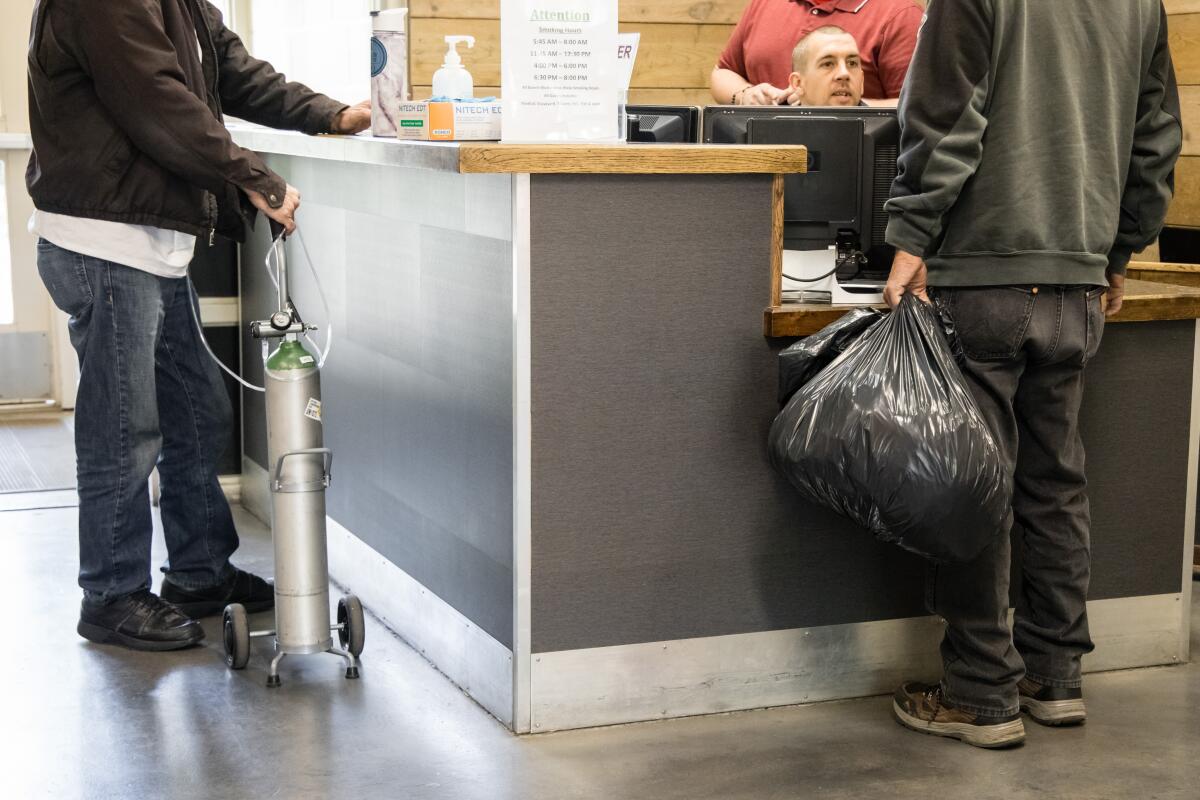
Two of the three emergency shelters are run by Boise Rescue Mission Ministries, a Christian organization that has limits on how long residents may stay. If they do not enter one of the Rescue Mission’s Bible-based recovery programs, men are eligible for 17 days of emergency shelter and women, 30. Then, after 30 days away, presumably back on the streets, they may return. The time limits are suspended during Boise’s frigid winters.
To the Rev. Bill Roscoe, president and chief executive of the Rescue Mission Ministries, the city has a housing crisis, but it doesn’t have a shelter crisis. That is why he supports the anti-camping ordinance, which the 9th Circuit upended with its ruling. He says it is “the epitome of insanity” to have tent cities with people “living in all kinds of misery, with children, with elderly and not trying to intervene there, not trying to do something about it.
“To me, if it means you pass a law, you pass a law,” Roscoe said. “Because then, at least, for the majority of those people, they’re going to say, ‘I think I will check in to the shelter.’ And when they check in to the shelter — at least in this city — they’re going to find the help they need to overcome homelessness.”
Hawkes stayed briefly at City Light, the Rescue Mission’s shelter for women and children. But she didn’t want to be separated from her boyfriend, and the Christian organization does not accommodate couples, married or not. Hawkes also said the shelter compelled her to participate in religious activities.
Her other options? Few and far between.
In 2006 and 2007, Hawkes was cited by Boise police 11 times for camping in a public place and once for disorderly conduct. In each instance, she said, she spent time in jail because she could not afford the fines.
During the lengthy legal battle of Martin vs. City of Boise, a police officer testified that he had cited Hawkes for sleeping outside “wrapped in a blanket with her sandals off and next to her,” according to court documents. And for sleeping in a public bathroom “with blankets.” And for sleeping in a park “on a blanket, wrapped in blankets on the ground.”
All of which led the 9th Circuit to conclude that “a municipality cannot criminalize such behavior consistently with the 8th Amendment when no sleeping place is practically available in any shelter.”
Hawkes has since returned to Spokane. She is staying with friends and looking for a job. She is hoping to move into an apartment soon. A decade has passed since the suit was filed.
In his September State of the City speech, Mayor Bieter talked about the strides his city is making to help homeless people find a way off the streets for good. He lauded New Path Community Housing, a 40-unit apartment complex for chronically homeless people that opened in early December 2018. He noted that a similar complex for homeless veterans has broken ground.
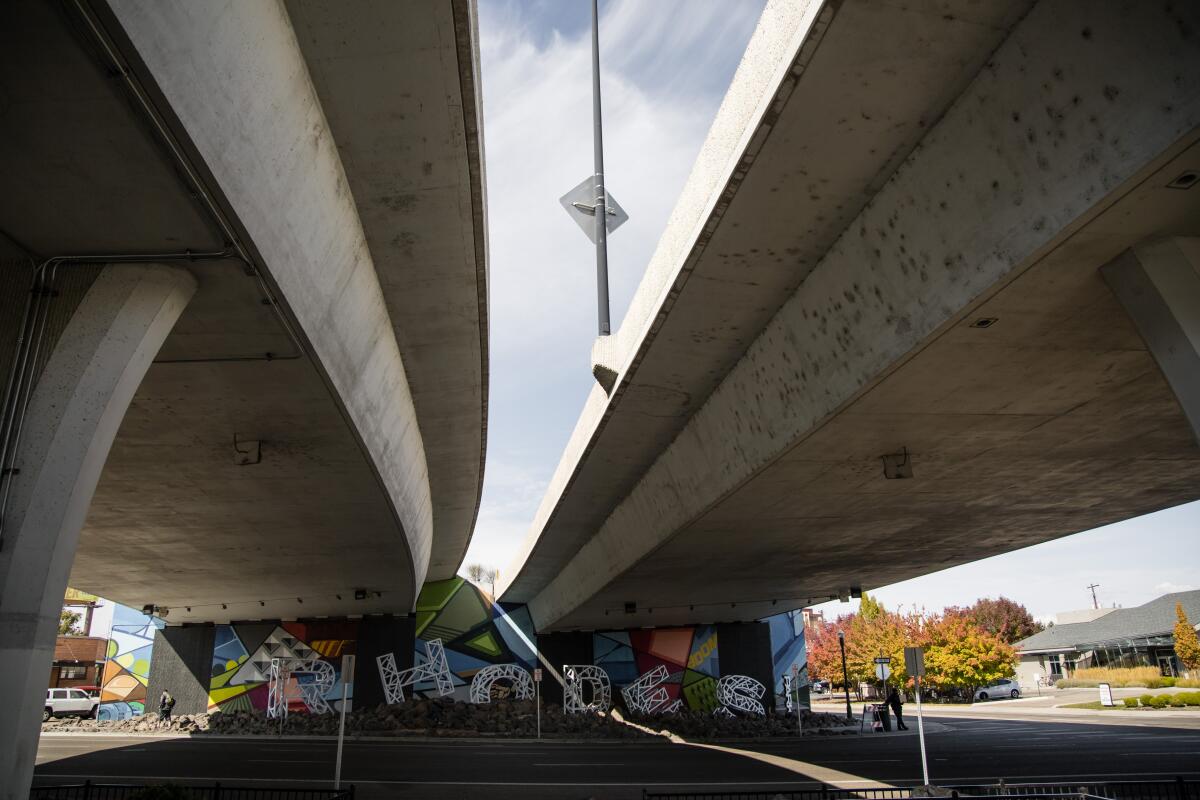
And he said the city has begun to focus on the needs of Boise’s homeless families. There are 166 such families, he told the audience gathered in the ornate Egyptian Theatre, and 90% are homeless for the first time.
“You know, it costs $6,000 to end homelessness for a family,” Bieter said. “Six thousand dollars is the difference between a child sleeping in a shelter or having their own bedroom and the kind of supportive services that are going to help that family get out of homelessness.”
He did not elaborate on what that $6,000 would cover. City spokesman Mike Journee said in an email later that it is “the estimated average amount that it would take to help [a] family find housing, pay a deposit and sponsor the rent while the family works with a case manager to achieve their goals of financial independence, health and resilience.”
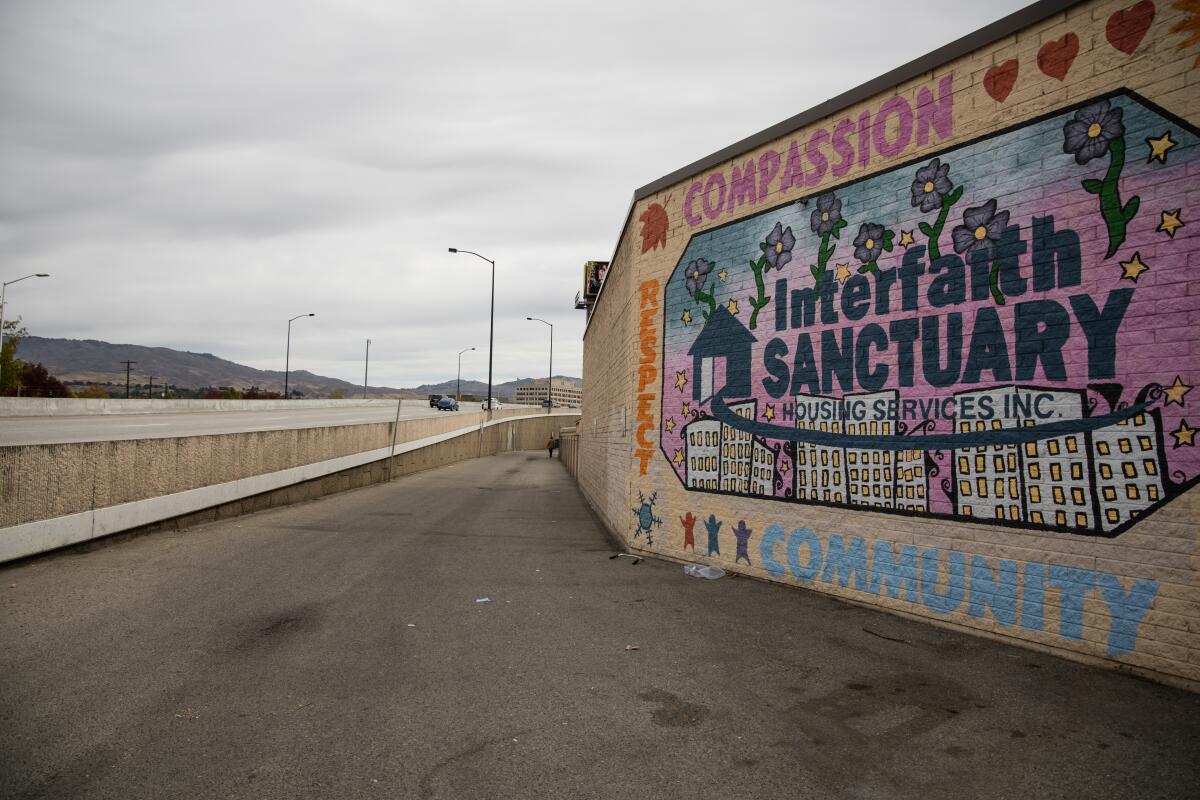
Seems like a manageable amount for a city: $6,000 x 166 families = $996,000. In Los Angeles, by comparison, taxpayers approved Measure H and Proposition HHH, on top of numerous state measures, to send millions of dollars toward housing, shelters and services for homeless people — and that still hasn’t been enough to make a dent.
The problem in Boise, however, is a far smaller number: 0.71%.
That was the vacancy rate for apartments in the price range of the city’s lowest-income residents during the week Bieter gave his State of the City speech, according to housingidaho.com. The online listing service focuses on affordable, multifamily rentals.
While the poorest Angelenos often rely on a combination of shelters, bridge housing and apartments with services, much of it government-subsidized, Peg Richards runs Idaho’s only boardinghouse, a 45-unit complex called the Good Samaritan Home. Residents must be able to pay rent, which ranges from $450 to $750 per month. That gets you a private room, a half-bath, three meals a day every day, utilities, cable TV and housekeeping.
Good Samaritan Home has a 60-person waiting list, said Richards, who is also president of the Boise/Ada County Homeless Coalition. That’s 20 to 25 more applicants than usual.
“I had a resident who moved in here with 97 tickets on his record, mostly for open container, some for loitering, some for being in the park after dark,” she said. “He’d been homeless for five years.”
Say he had 100 tickets at $40 a pop, Richards continued. That’s $4,000 in five years of homelessness. He didn’t pay. He couldn’t pay. He spent time in jail for being a no-show in court. These are the things, she said, that make it hard to find housing, let alone pay city fines.
“It all boils down to this,” Richards said. “We have created a system that doesn’t work..... I don’t think the city should build a library, I don’t think the city should build a stadium, until everyone is housed.”
Although Los Angeles officials have joined Boise’s effort to persuade the Supreme Court to hear a challenge to Martin vs. City of Boise, they also recently announced that they will void nearly 2 million minor citations and warrants. The move will be of particular help to homeless people, for whom tickets and unpaid fines can be roadblocks to housing and other services.
That’s the kind of change Howard Belodoff could get behind. Belodoff is associate director of Idaho Legal Aid Services, and Martin vs. City of Boise is his second lengthy, major lawsuit against the city on the issue of homelessness. He has been suing Boise over its treatment of homeless people nonstop since 2005.
“Giving somebody a citation, a piece of paper that makes them a criminal and has a lot of consequences later on is not a solution to anything,” he said. “All Martin does, and all the court said was, if there is no available shelter, you can’t cite somebody for sleeping outside. If somebody’s conduct violates another ordinance, then they can be cited.”

Melissa Bell couldn’t agree more. Her 43 years are a catalog of all the things that can disrupt a life: Raised by an abusive, drug-addicted mother. Diagnosed with attention deficit hyperactivity disorder and on Ritalin at age 5. Molested by an older brother. Pregnant at 17. Beaten by an older boyfriend. Hooked on methamphetamine. In and out of rehab.
In recent years, she has rented a room, shared a duplex, slept in her car, spent time in jail, stayed at City Light. She was sober for six years, but relapsed. When she had a job at the end of last year, working at Your Health Idaho, the state’s insurance marketplace, she couldn’t afford to rent an apartment. And then she was laid off.
Bell has been clean and sober for six months now. She’s living at Interfaith Sanctuary and is enrolled in the shelter’s Project Well-Being, where she takes classes and is allowed to stay inside and away from temptation during the day. She dreams of being an insurance agent.
She has a message for the mayor:
“As far as the camping, where will people go? ... If you want us off the street, build housing. I’m sober and doing the right thing and I can’t get a home.”
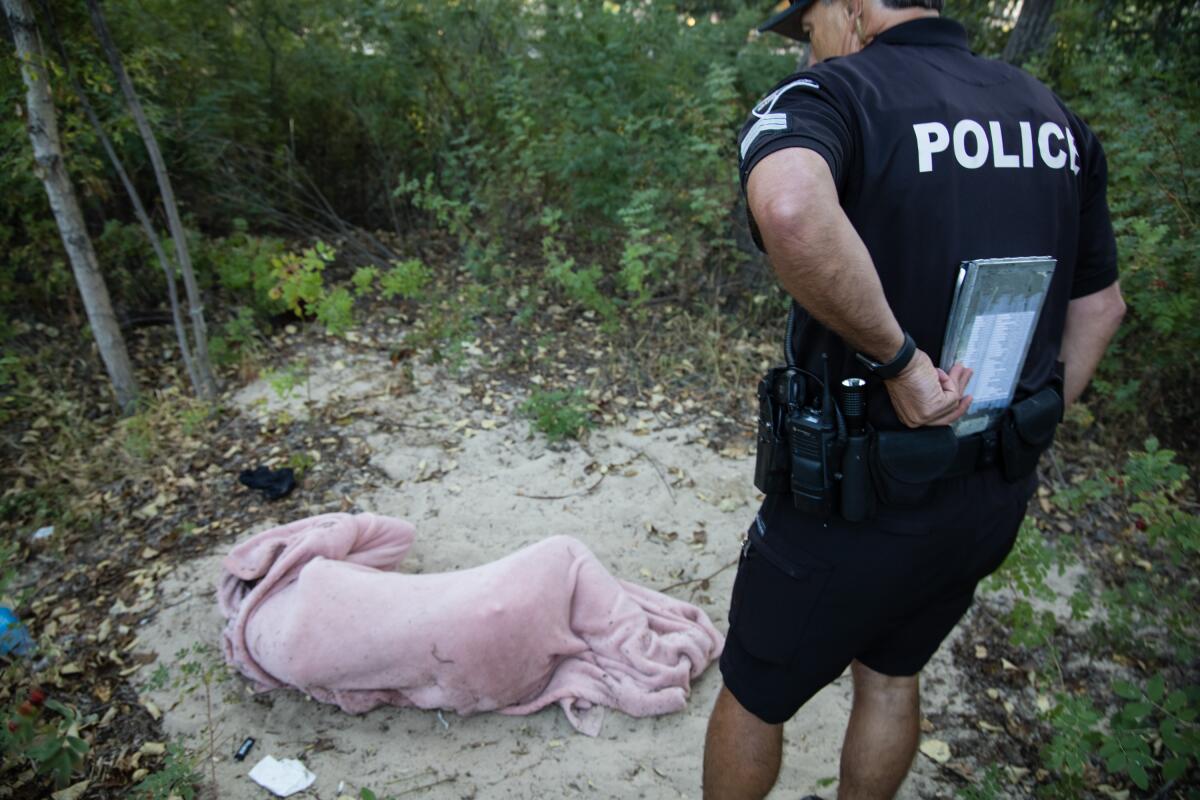
More to Read
Sign up for Essential California
The most important California stories and recommendations in your inbox every morning.
You may occasionally receive promotional content from the Los Angeles Times.











